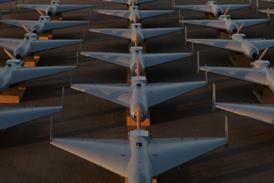As a new year begins, the first glimmers of hope appear to be showing through, but this is no time to let up pressure on costs, warns Chris Tarry of CTAIRA.
Now is the traditional time to look back over the year just gone, and ahead to the year still to come. Both have or will pose challenges. The last 12 months started with the Iraq war and SARS, while the backdrop of a mixed economic outlook also took its toll. The year ahead looks a little more promising but there are no guarantees.
Looking back over 2003, war and SARS were clearly both "external shocks" to the business but the experience and expectation surrounding them were vastly different.
The reaction to the war in Iraq in March was almost entirely predictable. Traffic and airline share prices both descended ahead of the actual event, mirroring the experience of a decade before. As the shooting began, the European majors, exposed on their key international routes, reached a trough.
On the other hand, the SARS outbreak came out of the blue and took the world into the unknown. With perfect hindsight it now looks as if the immediate reaction was excessive, but the traffic recovery has been equally dramatic and more rapid than might have been expected at the time.
Concerns have been voiced over the potential for another outbreak of SARS or a similar virus. However, given that the phenomenon is better understood than it was a year ago, it is reasonable to conclude that the effects of a second outbreak would be less dramatic in terms of the response by either the public health authorities or the travelling public.
Against the background of these external shocks the economic environment across much of the world remained uncertain for much of the year, led by the USA and Europe. Although the US economy is now reporting exceptionally strong growth, it remains to be seen just how much of this feeds through into air travel. Clearly, on international routes, the weakening of the dollar leaves a question mark over the recovery of US out-bound travel, yet this could at the same time boost inbound numbers, particularly for leisure.
The Europeans face a mixed economic picture, with the German economy remaining particularly weak but signs of modest recovery elsewhere. Despite this, intra-European traffic for the majors has remained relatively steady, likely to show a percentage point growth for the year as a whole when the final figures are in. Capacity and traffic appears to have moved into balance with rising load factors; although to borrow a phrase from the economists, the "market clearing price" has fallen significantly. In fact, it looks likely to fall further.
The effect of the "new model airlines" continues to put pressure on the more established incumbents. And while the majors are fighting back with new fare structures of their own, the real test is whether or not they are able to make the necessary cost reductions to make profits at these new ticket prices. Some managements have set about the task with real vigour although the full results will still take some time to filter through.
Indeed, the fact that the industry appears on balance to have returned to a better state of equilibrium, at least in terms of capacity and traffic, brings with it causes for concern as well as relief. While there is optimism that the bottom may finally have been reached, the old cautions apply about avoiding the delusion and illusion that traffic growth can encourage.
The fact that, in volume terms, the industry may be better than a year ago is a step forward and indeed a starting point - but that is all that it is. The real issue centres on the value of the traffic being flown and the cost of flying it. Some of the anecdotal evidence about the level of achieved fares across the North Atlantic, certainly from the European side, is positively scary.
Furthermore, the fact that the industry may have reached its lowest ebb is not a reason to add more capacity. Yet that is exactly what the Europeans have announced for next summer.
Even in better times for the industry the difference between financial success and failure is very slight - at the present time the risk is even greater. It is worth noting that over the past three years the US majors have lost around $20 billion, wiping out the profits of the previous five years.
The recovery in traffic, in addition to "encouraging" the re-introduction of capacity, also has a potentially damaging consequence for further necessary cost reduction. The recovery in volumes, let alone profitability, results in questions from labour over the need for the concessions that they may already have conceded and raises the pressure for early "snap-backs". Even where this is not an issue, the recovery in volumes creates the impression of "back to normal" and gives rise to disbelief on the part of the workforce of any message from management that suggests that the environment is still challenging - which it is.
Whilst the outlook is undoubtedly better than a year ago, the need for continuing structural change in the industry continues. For those who succeed, the future may indeed be one of relative prosperity, but nothing in life is certain.
Source: Airline Business























